Are you truly making the cue ball obey your every command, or are you letting your shots decide your fate? In the world of billiards, cue ball control is the secret sauce that separates casual players from seasoned champions. If you've ever wondered how pro pool players seem to make the cue ball dance across the table, landing perfectly for each next shot, this is your playbook. Stick around to unveil game-changing secrets and transform the way you control the cue ball—starting right now.
Are You Unlocking the Full Power of Cue Ball Control?
Mastering cue ball control is the cornerstone of expert billiards. Imagine sinking the object ball and having the cue ball glide effortlessly into perfect position for your next shot—no more awkward angles or desperate banks. Cue ball control isn't reserved for professionals; it's a learnable skill that dramatically improves your consistency and confidence on the table. By understanding the physics behind how the cue ball moves after striking the object ball, you can predict and direct its path, taking full command of each frame.
Whether you're learning to control the cue for better position play or striving to win more games, everything starts with proper ball control fundamentals . Practical examples include using a stop shot to halt the white ball dead in its tracks after contacting the object ball, applying a draw shot to pull back for position, or employing follow and side spin techniques to create creative, game-winning patterns. Begin focusing on controlling the cue ball—not just pocketing balls—and notice your win rate soar.

Why Mastery of Cue Ball Control Elevates Your Game Instantly
The ability to control the cue ball transforms you from a shot maker into a strategist. Once you master cue ball control, you plan several shots ahead, using the white ball as a tool to orchestrate your next moves. This means you aren't reacting to whatever position the cue ball lands in—you’re proactively setting up easy, makeable shots. Pool isn't just about sinking balls; it's about placing the cue ball with precision and confidence, turning every turn at the table into a display of strategy and skill.
Top players know that effective cue ball control is what sets champions apart. When you consistently position the cue ball, you maintain offensive momentum and minimize your opponent's opportunities. The difference between an average game and a winning streak truly lies in how well you control the cue ball’s speed, spin, and trajectory after object ball contact. Develop this skill and you’ll witness an instant elevation in both your results and your enjoyment of the game.
Essential Principles of Cue Ball Control and Ball Control
Every aspiring pool player needs to understand the critical principles behind cue ball control if they want consistent success. At the heart of these principles is how the cue ball and object ball interact at each collision. The angles formed, the energy transferred, and the subsequent path of both balls can be predicted with practice, allowing for measured shots and precise positioning.
The physics of cue ball movement are not as mysterious as they may appear. Spin, speed, and the contact point on the cue ball all influence its post-impact path. By learning to control these variables, you move from simply striking the cue ball to orchestrating strategic patterns across the table. Let’s take a deeper look at the building blocks for superior ball control.
-
Understanding cue ball and object ball interaction
-
The physics of cue ball movement
-
Ball control strategies for consistent performance
-
How to control the cue ball for position play
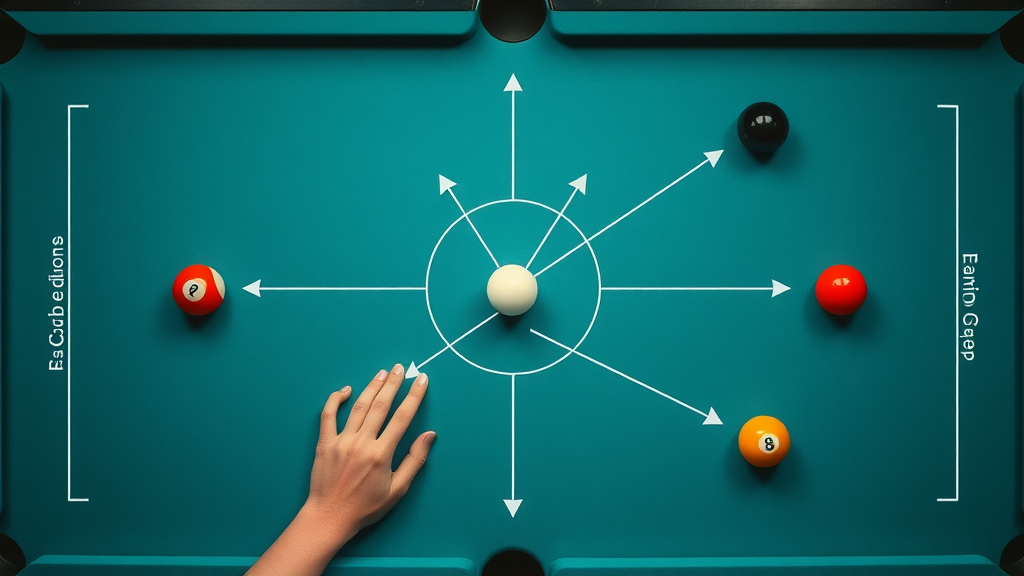
Transform Your Game: What You'll Learn About Cue Ball Control
Every serious pool player seeks to elevate their skills, and mastering cue ball control is the most direct route to game-changing success. In this article, you’ll learn how elite pool players combine science and art, blending physics with creativity for breathtaking results. Discover how advanced ball control strategies, power-versus-finesse techniques, and drilled precision can fix common errors and make you unstoppable on the felt.
-
The science and art behind cue ball control
-
Advanced ball control strategies
-
Techniques for power and finesse
-
Pro-level cue ball control drills
-
Solutions to common cue ball control mistakes
Cue Ball Control Techniques: Stop, Draw, and Follow Shots
Every cue ball control trick relies on three fundamental shots: stop, draw, and follow. Mastering each allows you to navigate any table situation with confidence. These techniques are not reserved for pros—any player, at any level, can use them to manipulate the white ball’s path and play for perfect position.
The stop shot freezes the cue ball precisely at the point of object ball contact; the draw shot creates powerful back spin, pulling the white ball backward; and the follow shot propels the cue ball forward after contact. Knowing when and how to play each is an essential part of your billiards toolkit.
Mastering the Stop Shot for Cue Ball Control
The stop shot is perhaps the most foundational cue ball control technique every player must master. To perform a true stop shot, strike the cue ball with a level stick directly through its horizontal center—this produces a ‘stun’ effect, freezing the white ball where it hits the object ball. This trick is vital for maintaining straight-line shape and limiting cue ball movement, especially in tight position play scenarios.
Perfecting the stop shot goes beyond simply striking the cue ball in the middle. You must balance stick speed, contact angle, and follow-through, ensuring the white ball’s energy is spent at the point of object ball impact. This reliable shot helps create consistency in your game, making it easier to control position after every successful pot.
Executing a Perfect Draw Shot to Control the Cue Ball
The draw shot, often called the back spin shot, is a signature move in cue ball control . By hitting the white ball below its center and following through smoothly, you impart bottom spin that draws the cue ball backward after it strikes the object ball. This can be particularly advantageous when you need to bring the cue ball back for another shot or avoid scratch hazards.
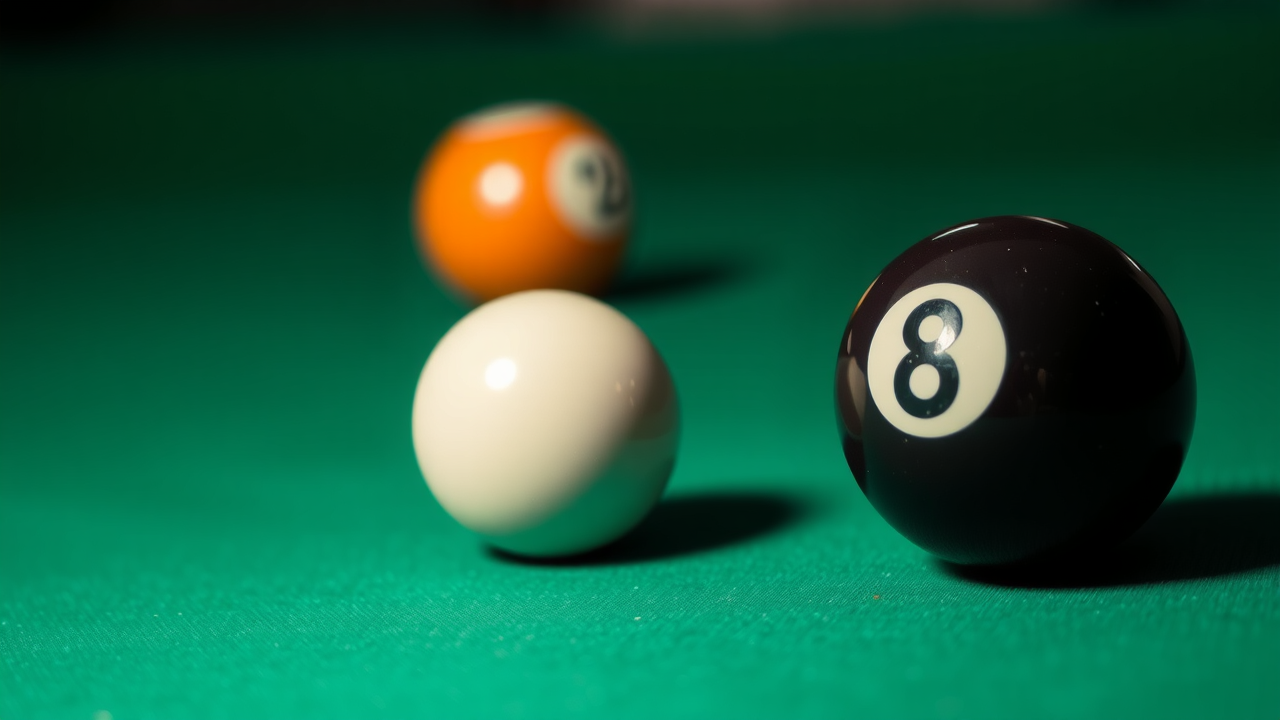
To execute the perfect draw shot, focus on tip placement—hitting low and striking the cue ball cleanly with a smooth motion is key. Practice adjusting your stroke power and follow-through; too much force can cause an unwanted jump or loss of control, while too little may not achieve the desired reverse motion. Consistent draw shots are a sign of high-level ball control and cue mastery.
Controlling the Cue Ball with the Follow Shot
The follow shot, achieved by applying top spin, sends the cue ball forward beyond the object ball after contact. To perform this shot, strike the cue ball above its center and ensure a fluid, forward follow-through with your cue. This technique is invaluable when you need the cue ball to travel further up the table or set up for shots that demand extended ball movement.
Understanding the relationship between force, spin, and the cue ball’s angle helps you master the follow shot for optimal position play. Learning how much top spin and follow-through is necessary for different distances is crucial for consistent cue ball control . Practice follow shots at varying speeds to unlock versatile gameplay strategies.
Unlocking Cue Ball Control Through Tangent Line and Position Play
Predicting where the cue ball will travel after striking the object ball is an indispensable aspect of elevated cue ball control . The tangent line is your blueprint for these movements—it’s the imaginary line showing the cue ball’s initial path immediately after contact.
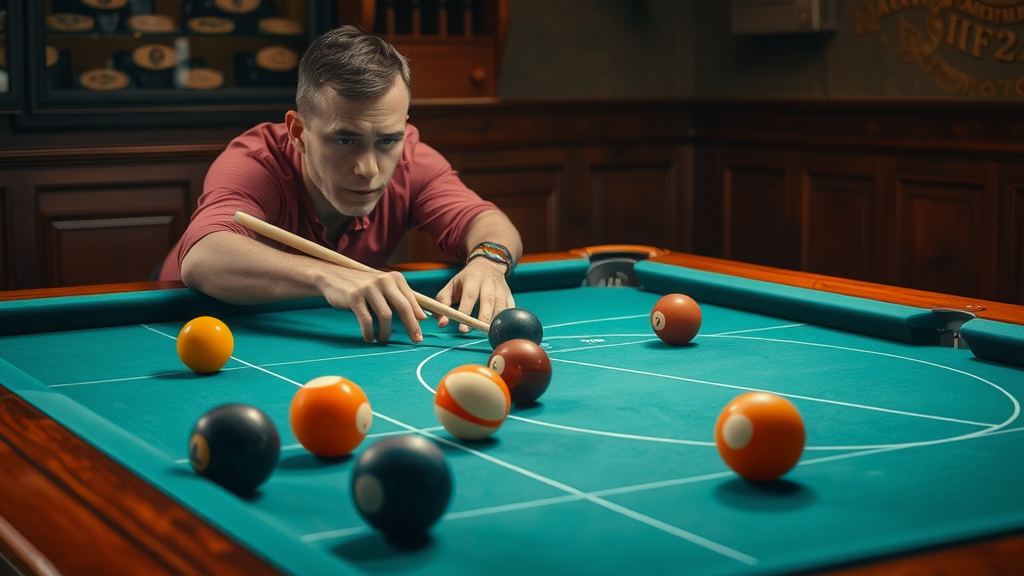
Mastering the tangent line, along with advanced position play, enables you to navigate clusters, execute carom shots, and plan multiple moves ahead. By visualizing tangent lines, you develop foresight and precision, making even complex run-outs possible.
Understanding the Tangent Line in Cue Ball Control
The tangent line is the line that the cue ball travels along after hitting the object ball, assuming no spin is applied. Understanding this natural path is critical for predicting cue ball movement , especially during stop and stun shots.
In most straight-line center ball hits, the cue ball will deflect the object ball in one direction and travel along the tangent line—an imaginary line that forms a 90-degree angle from the path of the object ball at the moment of impact. Visualizing the tangent line before every shot helps enhance your ball control skills and ensures you are never caught off guard by the white ball’s route.
Utilizing Position Play for Superior Cue Ball Placement
Position play is the art of guiding the cue ball to prime locations on the table for subsequent shots. Effective position play relies on your understanding of tangent lines, spin, and stroke speed. The ability to consistently control where the cue ball ends up can be the difference between running the table and getting stuck on a tough shot.
Develop your position play by practicing different combinations of stop, draw, follow, and side spin shots to solve common layout problems. This not only refines your control but also builds intuitive awareness, allowing you to confidently attack every table layout.
The Science Behind Cue Ball Control: Understanding Spin and Technique
Cue ball control is a marriage of physics and finesse. Every spin, stroke, and shot type impacts how the cue ball moves, gains or loses speed, and responds to the felt. Learning to apply spin deliberately equips you with powerful tools to command the table.
A vital part of ball control strategy is understanding how side spin, top spin, back spin, and stun shots change the tangent line and subsequent ball path. Each type of spin has a distinct and predictable effect—knowing when to use which is the hallmark of skilled play.
Side Spin: How English Impacts Cue Ball Control and Ball Control
Side spin—commonly called “English”—is a potent cue ball control weapon. By striking the cue ball to the left or right of center, you impart side spin that causes the ball to deflect off rails at wider or narrower angles and shift post-contact direction. Side spin allows pool players to navigate around obstacles and create advanced position play opportunities.
-
Top spin
-
Back spin (draw)
-
Side spin
-
Stun shots
Mastering English demands disciplined cue technique and purposeful shot selection—the wrong use can unintentionally send the white ball off course. Practice moderate amounts of side spin with straight and angled shots to gain confidence and control, gradually increasing complexity as you improve.
Best Practices to Control the Cue Ball Under Pressure
Even the most skilled players can lose focus when the stakes are high. The trick to maintaining cue ball control under pressure is consistency. Focus on a steady, repeatable pre-shot routine: Visualize the shot, align your stance, and use precise tip placement.
Pay special attention to a smooth backstroke and controlled follow-through, avoiding jerky motions that can ruin ball control. When nervous, concentrate on cue tip contact and slow down your pace—deliberate shots give you the best chance for predictable cue ball movement, no matter the situation.
Cue Ball Control Drills: Practice for Consistency and Precision
Drills are the fastest way to develop refined ball control. From simple exercises to advanced precision routines, practicing purposefully leads to tangible improvements in your accuracy, consistency, and confidence. Whether you’re a beginner yearning for cue ball basics or an advanced player seeking mastery, structured drills pay ongoing dividends.
Essential Cue Ball Control Drills for Beginners and Advanced Players
Start with the basics: Practice stop shots from varying distances, making sure the white ball neither rolls forward nor bounces backward after object ball contact. Move on to draw shots, adjusting force and tip placement to achieve greater draw distances. Then, repeat follow shots, focusing on different top spin strengths to control how far the cue ball rolls beyond the object ball.
Advanced drills include setting up obstacles to practice precise position play. Work through sequences that combine stop, draw, and follow shots in one run—aim to keep the cue ball within specified zones after each shot. These exercises sharpen both your ball control technique and your ability to plan future shots.
Creative Ways to Practice Ball Control at Any Skill Level
Inject creativity into your practice by making games out of your drills. Place coins, paper, or chalk marks on the table and challenge yourself to land the cue ball as close as possible to each target after shots. Track your progress over time and adjust difficulty as you improve.
Vary your starting positions and angles for each shot to simulate realistic game scenarios. Regularly switch between stop, draw, and follow drills, integrating side spin as you get comfortable. The more versatile your drills, the faster you'll achieve consistent ball control—even under tournament pressure.
Table: Quick Reference of Cue Ball Control Shots and Results
|
Shot Type |
Applied Spin |
Tangent Line Effect |
Outcome for Cue Ball Control |
|---|---|---|---|
|
Stop Shot |
Stun |
On Angle |
Stops dead after contact |
|
Draw Shot |
Back Spin |
Below Center |
Pulls cue ball backwards |
|
Follow Shot |
Top Spin |
Above Center |
Rolls forward after contact |
|
Side Spin |
Left/Right |
Deflected path |
Changes angle post-impact |
Quote: Pro Insight on Cue Ball Control
"True mastery of cue ball control is what separates an average player from a champion. Every top pro spends hours perfecting their control on the table." – Renowned Professional Player
The Role of Cue Technique and Stick Mechanics in Cue Ball Control
Even with flawless cue ball control knowledge, poor technique can sabotage your efforts. The way you grip the cue, align your stance, and execute your stroke all feed directly into how well you can control the cue ball. Every movement, from bridge hand positioning to follow-through, affects the outcome of each shot.
How Grip, Stance, and Stroke Affect Cue Ball Control
A relaxed, stable grip on the cue ensures precise transfers of energy to the cue ball. Your dominant hand should cradle the butt of the cue without tension, while your bridge hand anchors the cue in a consistent groove. Pair this with a balanced stance—feet shoulder-width apart, posture aligned with the shot—and your cue action becomes repeatable and powerful.
The stroke itself must be straight, smooth, and controlled. Jerky or rushed strokes lead to miscues and errant cue ball paths. Practice slow back swings and accelerations through the cue ball, making sure your follow-through points directly at your target. Mastery of grip, stance, and stroke mechanics is often the defining factor in reliable cue ball control.
Tips for Improving Your Cue Technique and Ball Control
Regularly review your fundamentals. Watch your stance in a mirror or record your practice to catch flaws in technique. Experiment with grip pressure until you find what gives you both control and comfort. Work on keeping your cue as level as possible and focus on making every stroke as smooth and straight as possible—consistency produces predictable ball control.
Consider investing in a high-quality cue tip, as the tip of your cue plays a significant role in imparting accurate spin and maintaining contact. Continual maintenance, including chalking and shaping, helps you strike the cue ball cleanly. Small improvements in technique can yield big gains in cue ball movement and overall confidence.
People Also Ask: What is the best tip for cue ball control?
Consistent tip position and follow-through are considered the best tips for reliable cue ball control. Always aim for a smooth, level stroke to maintain accurate ball control.
People Also Ask: How to manipulate the cue ball?
Manipulating the cue ball involves using various spins, speeds, and points of contact on the cue ball. Combining stop, draw, follow, and side spin shots is critical for expert cue ball control.
People Also Ask: How do you practice ball control?
To practice ball control, set up consistency drills focused on stop, draw, and follow shots. Emphasize repeatability, gradually adding complexity with position play and speed control challenges.
People Also Ask: How do you swerve a cue ball?
Swerve is created by applying extreme side spin and hitting with an elevated cue. This advanced cue ball control technique alters the natural path, allowing for curve shots around obstacles.
Expert Lists: Top 5 Cue Ball Control Mistakes and How to Fix Them
-
Misusing spin
-
Inconsistent cue stroke
-
Poor position play planning
-
Overpowering shots
-
Failing to visualize tangent lines
Tips: Focus on fundamentals, practice precision, and review shot selection to correct these errors.
Frequently Asked Questions on Cue Ball Control and Ball Control
-
What equipment helps improve cue ball control? Using a high-quality cue tip, a straight cue, and well-maintained balls enhances subtle spin and improves control accuracy.
-
How do professional players practice cue ball control? Pros dedicate time to repetition drills, position play sequences, and simulating game situations with varying spin and speed.
-
Can you control the cue ball with a break shot? Yes—skilled players use controlled power and intended cue ball contact to plan for post-break position, aiming for advantageous layouts.
Key Takeaways for Achieving Next-Level Cue Ball Control
-
Consistent practice of stop, draw, and follow shots lays the foundation for expert cue ball control.
-
Understanding tangent lines and spin applications is critical for advanced ball control.
-
Position play and cue technique are vital for precise cue ball movement.
Upgrade Your Skills: Start Practicing Pro-Level Cue Ball Control Today
Take your game to the next level by practicing these cue ball control secrets and techniques each time you play. Start mastering control drills now—your next pool victory awaits!
 Add Row
Add Row  Add
Add 
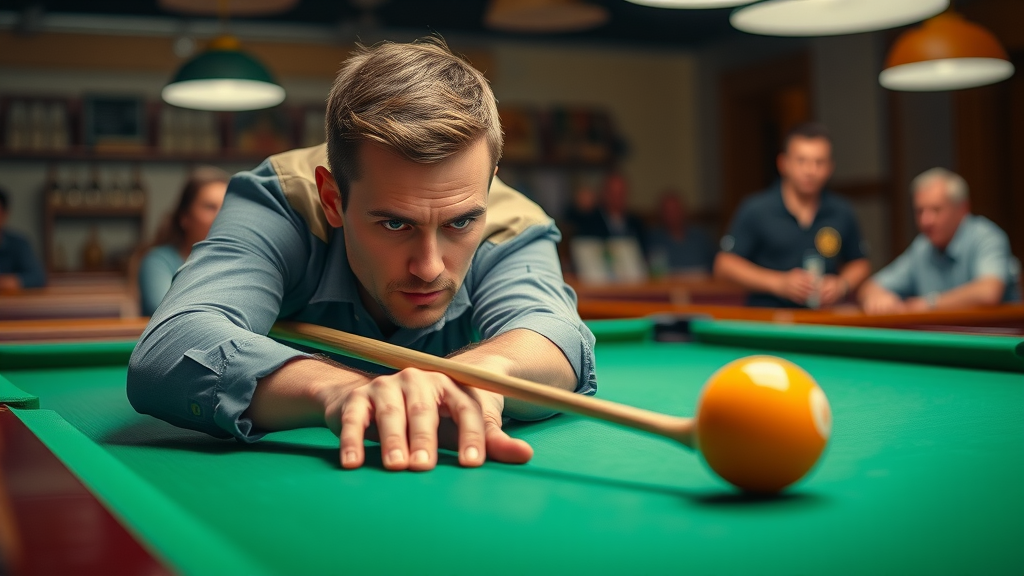
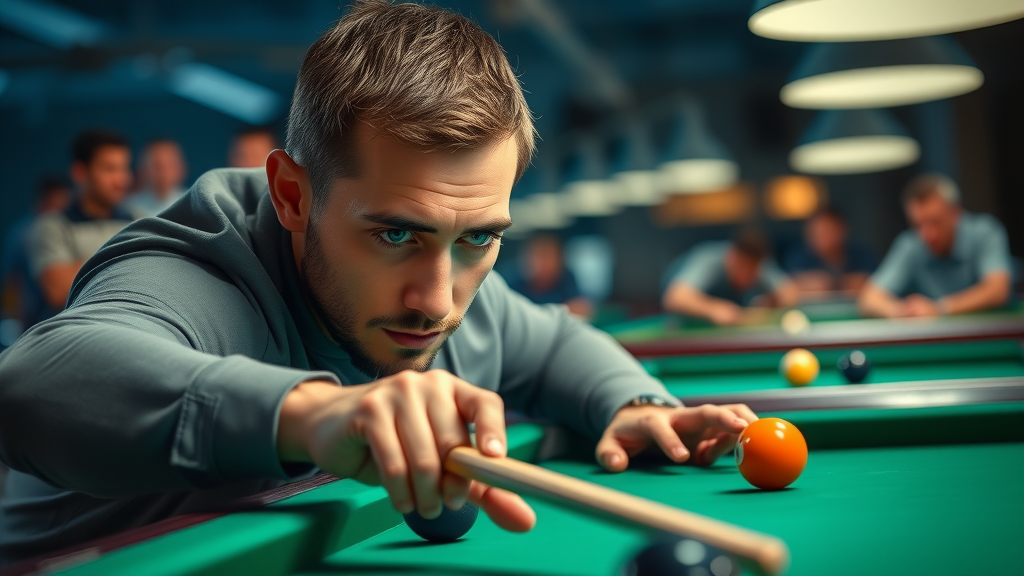
Write A Comment